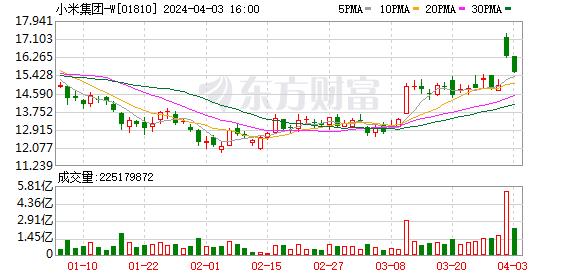Haval Xiaolong MAX (parameter picture), which was listed not long ago, was advertised as "four-wheel drive experience, two-wheel drive price, four-wheel drive performance and two-wheel drive energy consumption, so as to make the four-wheel drive model affordable for users", which caused a heated discussion in the automobile market. Just after Haval Xiaolong MAX was listed at a price of 159,800-179,800 yuan, everyone’s attention to this brand-new model reached its peak. Then, as a new masterpiece of Great Wall Motor with 33 years of experience in building cars, Haval Xiaolong MAX adopts the most advanced new energy technologies of Great Wall Motor, which also plays an important role in the transformation of Haval brand to new energy. So what is the strength of Haval Xiaolong MAX? Today, Chedegang will analyze this brand-new hybrid model in detail.

The experience of four-wheel drive and the price of two-wheel drive
Let’s talk about the price first. In the price range of 159,800-179,800 yuan, the models that can compete with Haval Xiaolong MAX at present basically sell well, such as BYD Song Series, Great Wall Haval H6, Changan CS75 PLUS, Geely Xingyue L and other domestic models. As for the above vehicles, Changan CS75 PLUS has not been listed in the plug-in hybrid version, so it is preferred to exclude them.

Only BYD Song PLUS has the four-wheel drive function of the above models, and the price of the four-wheel drive version is between 20.78-21.88 million yuan. Therefore, it has become the biggest competitor, but think about whether the price of Haval Xiaolong MAX feels very fragrant in an instant, which is why Haval Xiaolong MAX began to promote "the experience of four-wheel drive and the price of two-wheel drive" before it went on the market.

Performance of four-wheel drive and energy consumption of two-wheel drive
As for the "performance of four-wheel drive and energy consumption of two-wheel drive", it is because of the world’s first Hi 4 intelligent four-wheel drive electric hybrid technology carried by Haval Xiaolong MAX. The system is built by Great Wall Motor on the basis of the concept of "being more economical, farther and safer". It consists of a new generation of 1.5L hybrid special-purpose engine with high thermal efficiency, front drive motor, rear drive motor and high-safety and high-performance power battery. The comprehensive power of the system is 205kW, the comprehensive torque is 585N·m, the pure electric cruising range of NEDC is 105km, the comprehensive fuel consumption of WLTC is 1.78L/100km, and the acceleration from zero to 100 km is 6.

Advantages of Hi 4 intelligent four-wheel drive electric hybrid technology
To say that the biggest highlight of Hi 4 intelligent four-wheel drive electric hybrid technology is iTVC intelligent torque vector control system and 3-engine 9-mode intelligent dynamic switching, which can enable drivers to switch to Hi4 despite driving, fuel saving and power mode. Among them, iTVC intelligent torque vector control system, by analyzing the driver’s power demand, vehicle speed, road ramp, steering wheel angle and other vehicle driving conditions and the driver’s operation, combined with the intelligent sensing hardware carried by the vehicle, can perceive the road conditions that the vehicle needs to drive next in advance and make the optimal four-wheel torque distribution scheme, so as to achieve the perfect balance of vehicle power performance, fuel economy and vehicle stability. Specifically, when driving Haval Xiaolong MAX to turn corners, the vehicle intelligently distributes the front and rear axle torques, and cooperates with the vehicle dynamic control system (VDC) to intelligently correct the driving state of the vehicle, increasing the rear axle torque when entering corners and increasing the front axle torque when exiting corners, thus realizing the rapid and stable entry and exit of the vehicle into corners. In fact, there are many similar scenes, but because of the limited space, I won’t list them one by one. You can explore them yourself.

Intelligent dynamic switching of three engines and nine modes means that the Hi4 system can intelligently switch in nine modes, namely pure electric two-wheel drive, pure electric four-wheel drive, series mode, 1st-gear direct drive, 2nd-gear direct drive, parallel two-wheel drive, parallel four-wheel drive, single-axis energy recovery and double-axis energy recovery, and flexibly match the optimal working mode, so as to reduce the fuel consumption of vehicles.

Dynamic fashion sense of exterior design
In appearance, the Haval Xiaolong MAX is different from the previous Haval models and adopts a brand-new design language. The front face adopts borderless rhombic air intake grille with sharp "7" headlights on both sides, which looks very fashionable and dynamic. The official also gave this headlight a very imposing name called "Patrol Falcon Headlights", which means that the headlights adopted by Haval Xiaolong MAX are as powerful and elite as eagle eyes.

On the side of the car body, the waistline running through the front and back, chrome trim on the edge of the window and 19-inch petal-shaped wheels make the whole car side look very sporty and fashionable.

In terms of body size, the length, width and height of Haval Xiaolong MAX are 4758×1895× 1725mm and the wheelbase is 2800mm, which is a medium-sized hybrid vehicle. This body size is already at the leading level in the same price model. Moreover, in the trunk space, the performance of Haval Xiaolong MAX is also remarkable, and its regular space is 551L L. After the back seat is laid down, a fully flat space with a length of 1783mm, a width of 1445mm and a height of 693mm can be formed, with a volume of 1377L, which is enough to meet the travel needs of the whole family.

At the rear of the vehicle, Haval Xiaolong MAX didn’t follow the trend with penetrating taillights. Instead, it used a split headlight group with full personality. The interior was designed like a star, which had strong recognition after lighting. In addition, Haval Xiaolong MAX has the exclusive logo of Hi4 at the rear to highlight its identity.

The interior design is more intimate and the sense of technology is bursting.
When I came to the car, the most striking thing was the oversized screen on the center console. It was really bursting with technology. It was composed of a 12.3-inch LCD instrument, a 12.3-inch central control panel and a 12.3-inch passenger screen. With the oversized W-HUD head-up display, it could achieve four-screen linkage. With the advanced car system, this super-large screen connection of Haval Xiaolong MAX has better fluency and more agile response speed.

Of course, voice control, which has become popular now, will not be absent on Haval Xiaolong MAX, and it can also carry out multiple rounds of conversations, support the function of seeing and talking, and cooperate with rich apps covering online music, video, navigation, etc., so that drivers and passengers can travel more conveniently, but also bring good fun.

At this time, some people will say that it is good to have more screens, but it will affect the driver when traveling and reduce driving safety. In fact, Haval Xiaolong MAX took this into consideration at the beginning of its design. Its co-pilot screen and central control screen run completely separately, and the co-pilot screen can also be connected with Bluetooth headsets separately, which not only avoids the co-pilot from affecting the driver when he is painting the drama, but also improves the entertainment experience of the co-pilot. Isn’t it very intimate?

W-HUD head-up display can display the driving information such as vehicle speed, rotation speed, navigation and alarm on the front glass, and can also adjust the humanized functions such as brightness and height of the display, so that drivers can drive more safely and conveniently.


Below the central control panel, Haval Xiaolong MAX is also equipped with 50W wireless charging, and air cooling is designed at the bottom to avoid overheating when charging the mobile phone. Moreover, the designer of Haval Xiaolong MAX also designed the same mobile phone placement place on the passenger side, which made the vehicle more symmetrical.

In terms of vehicle seats, Haval Xiaolong MAX driver and passenger seats are designed according to SAE95% ergonomic standards, and advanced technologies such as PVC cover and double-density foaming are adopted to create seats that conform to the posture of domestic consumers. The profile can perfectly fit the human spine and has good riding wrapping and comfort.

In terms of seating space, Haval Xiaolong MAX has also achieved the same level of leadership. The head space of the front seat is 899mm, the cushion width is 510mm, and the length is 500 mm. The main driving seat also supports 8-way adjustment, while the head space of the rear seat is 909mm, the maximum leg space is 970mm, the cushion width is 1320mm, and the length is 510 mm. Even if you are 1.8 meters tall, you will not feel it when riding Haval Xiaolong MAX.

With regard to the quietness of the vehicle, Haval Xiaolong MAX has comprehensively improved the static and dynamic NVH performance of the vehicle through multiple rounds of adjustment. The whole body is made of 35 sound-absorbing materials, and the coverage area of sound-absorbing materials is increased in key parts such as side walls and door panels. Moreover, the front windshield and front door are all made of double-layer sound insulation glass, so that Haval Xiaolong MAX has a safe and comfortable quiet space whether driving at high speed or in cities.

Analyze the configuration of three models to see which one has the highest price comparison.
Having said that, are you tempted to buy Haval Xiaolong MAX? But I don’t know three models, how to choose? Let’s analyze the three models of Haval Xiaolong MAX to see which one is the most cost-effective.
The power of the three models of Haval Xiaolong MAX is the same, using a 1.5L hybrid special engine and advanced Hi4 intelligent four-wheel drive electric hybrid technology. Therefore, the difference between the three models is only in the vehicle configuration.

1.5L Hi4 105 four-wheel drive elite edition
Official guide price: 159,800 yuan
Although it is an entry-level version of Haval Xiaolong MAX, its configuration is not low at all. It is equipped with three 12.3-inch LCD screens, voice recognition, fatigue driving reminder, 540 panoramic image, single pedal mode, panoramic sunroof, remote start, keyless start (entry), 220V external discharge, OTA upgrade, car networking, front seat heating, mobile APP remote control, automatic headlights and automatic air conditioning.

1.5L Hi4 105 four-wheel drive pilot edition
Official guide price: 169,800 yuan
The price of the four-wheel drive pilot version is just 10,000 yuan higher than that of the entry-level version. In the configuration, there are more functions such as L2+ driver-assisted coffee intelligent driving, parallel assistance, door-opening warning, reversing warning, electric trunk, trunk memory, Bluetooth key, electric adjustment of the passenger seat, adaptive far and near light, 64-color atmosphere lights in the car, electric folding (heating) of the exterior rearview mirror, and so on. In addition, the speakers have also been upgraded from six. In particular, adding L2+ driver assistance to the coffee intelligent driving can greatly improve the driving safety of vehicles and alleviate the driving fatigue of long-distance travel. It is also the most cost-effective model among the three models, which is worth starting with.

1.5L Hi4 105 four-wheel drive intelligent ultimate edition
Official guide price: 179,800 yuan
The price has increased by 10,000 yuan, and the configuration has increased the functions of moving object early warning system, front parking radar, automatic parking, remote parking, tracking and reversing, inductive trunk, W-HUD head-up display, wireless charging of 50W mobile phone, memory of main driver’s seat, etc. In addition, the number of ultrasonic radars has increased to 12, the number of millimeter-wave radars has increased to 5, and the whole vehicle has 22 high-sensitivity hardware. Although the price of the four-wheel drive smart flagship model is 10,000 yuan higher than that of the mid-range model, there are not many extra configurations, but the extra configurations are high-cost functions and can effectively improve the safety performance of the vehicle, so for consumers with sufficient budgets, the four-wheel drive smart flagship model is also a good choice. After all, more money will be spent and the configurations will be more abundant.

Che Degang concluded:
As a brand-new hybrid model, Haval Xiaolong MAX can feel its sincerity from the price. Secondly, the Hi 4 intelligent four-wheel drive electric hybrid system is the first in the world, which has strong power and can also take into account the fuel economy of the vehicle. Moreover, it can intelligently adjust the torque of four wheels, so as to calmly cope with various complex road conditions. In the appearance and interior design of the vehicle, Haval Xiaolong MAX is also very careful, reflecting the sense of fashion, but also bringing a strong sense of science and technology, which is very in line with the aesthetics of consumers now. In terms of vehicle configuration, Haval Xiaolong MAX can be said to be high at the beginning, and the strength of its three models can not be underestimated. By comprehensive comparison, Che Degang recommends that everyone start the four-wheel drive pilot version.















































